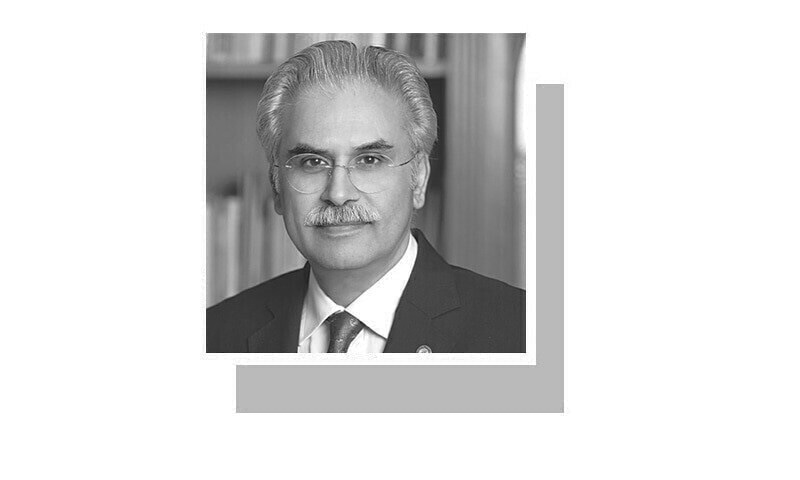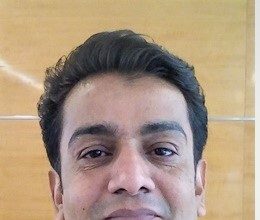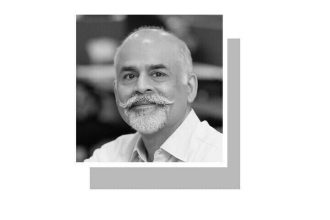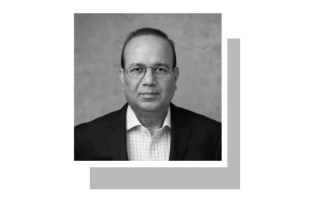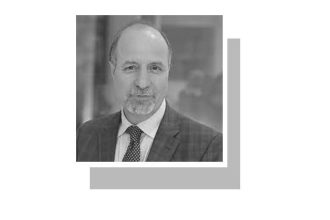NON-COMMUNICABLE diseases in Pakistan present a growing burden of disease (BoD) that no number of advanced medical interventions can tackle.
This umbrella includes chronic diseases and conditions like cardiovascular diseases, diabetes, obesity, liver and kidney dysfunction, chronic obstructive respiratory disorders, cancers, mental disorders, etc.
Globally, 74 per cent of deaths are caused by these diseases. Seventy-three per cent of all deaths due to NCDs occur in low- and middle-income countries. In 2010, the burden of disease posed by NCDs in Pakistan surpassed that of communicable diseases with ever-increasing presentations.
Currently, every fourth adult above the age of 20 in Pakistan suffers from Type II diabetes; that’s 33 million adults, making us the third-largest population in the world, right after India and China. Every third Pakistani adult above the age of 45 years suffers from high blood pressure.
One in every nine women is likely to face breast cancer. In Pakistan, years lived with disability — a product of prevalence and disability weight — for women aged 10 to 24 years, due to breast cancer, is the highest in the world. Every fourth woman quietly struggles with perinatal depression.
A study spanning 30 years on BoD trends in Pakistan shows that all NCDs are on the rise. Ischemic heart disease, for example, has increased by more than 25pc in the last 30 years. In terms of changes in the BoD ranking of diseases, diabetes moved from 26th place in 1990 to eighth place in 2019, and breast cancer from 38th to 18th in the same period.
The WHO lists the following five key risk factors for major NCDs: tobacco use, an unhealthy diet, physical inactivity, harmful intake of alcohol and air pollution.
Lifestyle medicine is about holistic care.
A major element of these diseases, conditions and their associated risk factors comprises our behaviours in daily lives. The burden of disease of NCDs will not change until we change our individual lifestyle choices.
Lifestyle medicine is about holistic self-care and supporting others to change their daily unhealthy behaviours in terms of what they eat (nutrition); how much they exercise (physical activity); how much they sleep (restorative sleep); how they handle stress (stress management); their use of any harmful substances (addictions); and the quality of their social connectedness. These are the six evidence-backed pillars of lifestyle medicine.
Though the ideas posited are not new, this is still, in a way, a new branch of medical science. Lifestyle medicine has reorganised old ideas into a new, preventive and therapeutic framework, with strong evidence at the base of each of its six pillars. Many credible studies speak to the effectiveness of these lifestyle behavioral changes when sustained. The collective and synergistic effect of these six behaviours is transformative in the truest sense of the word.
Adopting these behaviours when we are ‘healthy’ or ‘disease-free’ tremendously lowers the chances of developing NCDs. However, since lifestyle medicine in its current form has primarily been developed by medical practitioners in the West, understandably, the emphasis is on treatment.
In the therapeutic sphere, this medicine has indeed shown unequivocal effectiveness, to an extent that patients with NCDs not only experience remission but also a reversal of their diseases, which I have discussed in my column ‘Reversing NCDs’ (March 21, 2025) focusing solely on the disease or symptoms.
Lifestyle medicine employs a holistic approach rather than focusing solely on the disease. Its aim is to entrain the whole person by aligning with the circadian rhythm and restoring homeostasis. It generally employs non-pharmaceutical lifestyle interventions. In the hands of a skilled lifestyle medical practitioner, the results are astounding.
The American College of Lifestyle Medicine, established in 2004, conducts various ‘continued medical education’ activities year-round, including a board exam. The International Board of Lifestyle Medicine was set up by the ACLM in 2018 and hosts lifestyle medicine certification exams around the world, which have produced, to date, over 8,000 IBLM diplomats in 92 countries, including 41 in Pakistan, according to the last count. In 2015, the ACLM also initiated the Lifestyle Medicine Global Alliance comprising professional lifestyle medicine associations from around the world.
The only national body from Pakistan in this global alliance is the Pakistan Association of Lifestyle Medicine, which was founded in 2016 by the visionary Dr Shagufta Feroz, the first IBLM diplomat from Pakistan. It has since grown in terms of its membership, credibility and global standing. Since 2021, PALM is the only organisation in Pakistan authorised to conduct the IBLM certification.
Dr Feroz started out as a family physician in Lahore. Getting fed up over time with the way general practice was being conducted, with its irrational use of medicines, and the pharmaceutical industry’s unethical practices, she began to explore alternatives. Dr Feroz ended up completing two PhD degrees in nutrition and integrated medicine from the US.
During this period, she came across lifestyle medicine and finally found her nirvana. She has since been promoting this science by contextualising it in Pakistan’s case, and is currently running the 11th Postgraduate Lifestyle Medicine Certificate Course. I myself recently graduated from the 10th course, which I enjoyed and benefited from tremendously. She has developed a great team of professionals, with ‘positive deviation’, that continues to grow.
That said, PALM still has a long way to go in terms of mainstreaming lifestyle medicine in the healthcare system. For starters, it needs to be integrated at the undergraduate level into the education of health professionals. Further, the College of Physicians and Surgeons of Pakistan needs to seriously attend to the initiation of postgraduate membership and fellowship programmes in lifestyle medicine. PALM has started working in this direction. The time for lifestyle medicine has arrived.
The writer is a former health minister and currently a professor of health systems & population health at the Shifa Tameer-i-Millat University.
Published in Dawn, August 22nd, 2025



